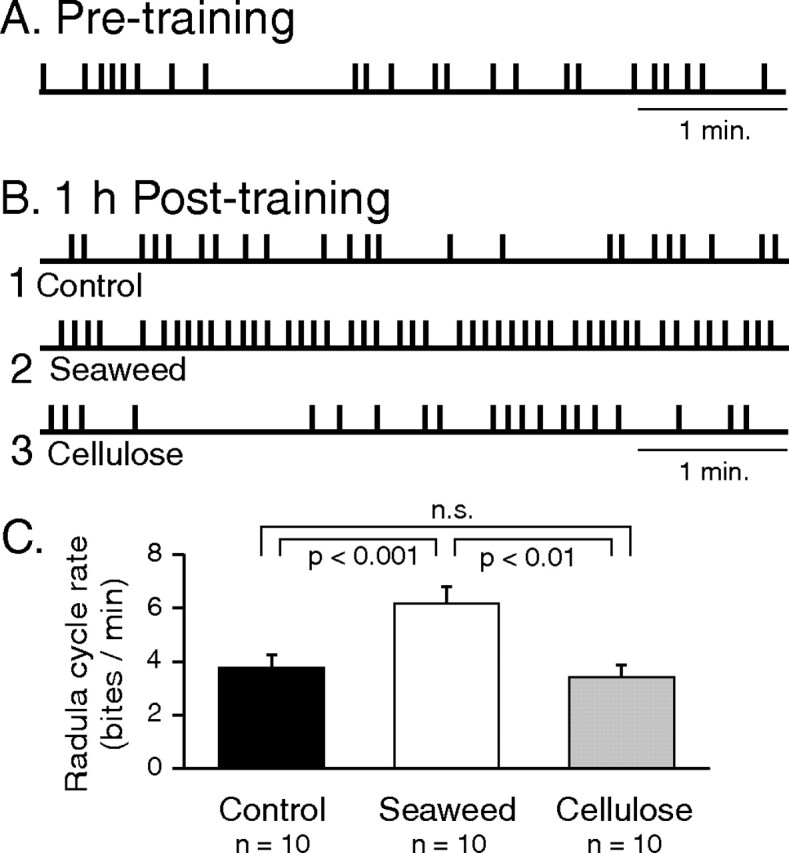Figure 2.

Food-reward training induces a long-lasting increase in radula cycle rate. A, B, Sample recordings of successive bites (vertical bars) in a naive animal (A) and 1 h after food-stimulus training in three different animals (B), one of which received the inciting stimulus alone (without reward stimulation) during the training period (Control; 1) or had received (and ingested) a piece of seaweed (Seaweed; 2) or an equivalent sized patch of cellulose (Cellulose; 3) in association with each spontaneous radula protraction. C, Group analysis of behavioral changes. The frequency of radula biting in the posttraining test period was significantly higher in the seaweed-rewarded group (unfilled bar; see also 2) compared with the control (black bar; q2 = 4.704) or cellulose-rewarded groups (gray bar; q3 = 4.167). The cellulose and control groups were not significantly different [not significant (n.s.); q2 = 1.497].
